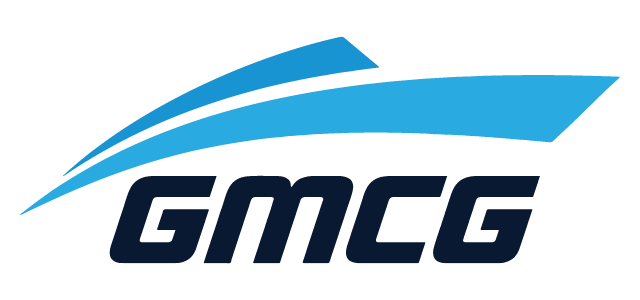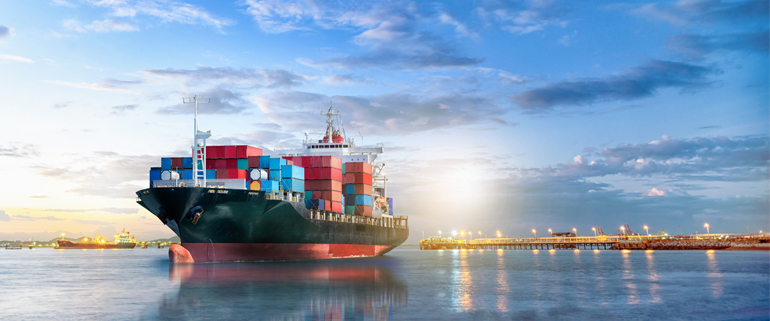Shipping Faces New Environmental Regulatory Challenges in 2018
Welcome to the first edition of the GMCG blog, providing one-stop updates, commentary and advice on the big issues of the day for maritime operations across the globe. From regulations, finance and legal issues, to risk and safety, to technical and technological advances, to 21st-century crew management, we’ll be keeping our finger on the pulse of the complex, challenging and dynamic worlds of shipping and offshore.
And, as Europe recovers from the big freeze known as the Beast from the East, the outlook for environmental regulations seems like a good topic for this first blog. Without a doubt, shipowners and operators need to prepare for a huge increase in environmental regulation coming their way in 2018 and beyond. In the coming years, we face major challenges and choices to comply with new rules. But, as an industry, we can also approach this as a chance to contribute to a cleaner environment and protect our oceans for future generations, while exploring how to derive new economic and operational benefit from all the changes ahead.
THE SULPHUR CAP AND FUEL OIL REPORTING
Perhaps the loudest debate in the last few months has been on the 2020 0.5% m/m (mass by mass) limit for the sulphur content of ships fuel oil that the International Maritime Organization (IMO) has confirmed is coming into effect from January 1, 2020 – and there will be no delays.
IMO’s current global sulphur cap is 3.50%, although vessels operating in Emission Control Areas (ECAs) have been subject to a 0.1% m/m sulphur limit since January 2015. ECAs are now in place in regions of particular environmental sensitivity across the Baltic Sea, the North Sea, designated coastal areas off the US and Canada, US Caribbean Sea around Puerto Rico and US Virgin Islands.
The IMO is also planning to close a potential loophole by banning ships from even carrying the fuel without a seawater scrubber from March 1, 2020. That extra rule still has two more hurdles to pass through, but it would make it far easier to enforce the new regulation.
The sulphur limit forms part of Annex VI to IMO’s International Convention for the Prevention of Pollution from Ships (MARPOL) Convention and you can download a more detailed IMO briefing here.
While 2020 may seem like a way off, oceangoing vessels need to start thinking now about how to adapt. The current options for compliance are:
- Switch to low sulphur fuels
- Fit a seawater scrubber
- Adopt LNG as a substitute fuel
This is not an easy technical choice. Fitting a scrubber can cost between $3m and $4m, though prices may come down as the technology improves and adoption increases. Using LNG exposes ship owners to variations in price and supply, while low sulphur fuels can be up to 50% more expensive.
From March 1 this year, new mandatory requirements for ships to collect data on their fuel consumption also entered into force under MARPOL Annex VI. Under the IMO Data Collection System (DCS), ships of 5,000 gross tonnage and above will now be required to collect consumption data for each type of fuel oil they use and report aggregated data annually to their flag state.
The new regime requires the creation of a Ship Energy Efficiency Management Plan (SEEMP) by December 31 this year, including a description of the methodology that will be used to collect the data and the processes that will be used to report data to the ship’s flag state. Data collection starts on January 1, 2019 and reports are due at the end of each calendar year. You can read an IMO briefing on the new rules here.
BALLAST WATER
The IMO’s new Ballast Water Management Convention came into force in September 2017 and compliance will remain a hot topic throughout 2018. Aimed at protecting the oceans from invasive aquatic species, the Convention requires ships to carry a ballast water management plan and a record book. By 2024, ship owners will also have to comply with a stricter standard that specifies a maximum volume of viable organisms that can be discharged into the water. In the US, the Coast Guard has its own set of rules and is set to become stricter in enforcing them, having type-approved six ballast water management systems.

Source: International Maritime Organization
GARBAGE INCLUDING HME CARGO RESIDUES
Moving from ballast to garbage, on March 1 new amendments entered into force to Regulation 4 and 6 of MARPOL Annex V (Prevention of pollution by garbage from ships). These cover:
- Criteria for determining and declaring solid bulk cargo residues that are harmful to the marine environment (HME)
- A new Garbage Record Book (GRB) format
- A new garbage category for e-waste
The new form of the Garbage Record Book is divided into two parts. Part I is applicable to all ships and covers all garbage other than cargo residues, including the new e-waste category. E-waste is defined as electrical and electronic equipment used for the normal operation of the ship or in the accommodation spaces, covering items such as electronic cards, gadgets, equipment, computers, printer cartridges, etc, and including all components.
Part II covers cargo residues and is only valid for ships carrying solid bulk cargo, with a requirement for shippers to declare residues as HME or non-HME.
2018 03 MARPOL Annex V also requires a Garbage Management Plan (GMP) and placards posted on board noting discharge requirements.
Since MARPOL Annex V entered into force in 2013, the general principle has been that port reception facilities (PRFs) should the primary means of garbage disposal, with increasingly severe limitations on the discharge of waste at sea. Unfortunately, a lack of adequate PRFs remains a major challenge around the world, particularly for HME bulk cargo residues and wash waters.
The technical and operational difficulties of complying with new shipping waste disposal and emissions regimes were highlighted recently by Intercargo, the International Association of Dry Cargo Shipowners.
INTERNATIONAL MOVES
In Europe, there is also much discussion around emission monitoring systems. Under the EU MRV (Monitoring, Reporting, Verification) regulations, from January 1 this year, cargo and passenger ships over 5 000 gross tonnes calling at EU maritime ports are required to monitor and later report carbon emissions, fuel consumption and associated transport work. The IMO-DCS is similar but covers all ships worldwide. There is a one-year gap in implementation between the two regulations – the MRV first monitoring period is this year, while for DCS it will be 2019.
In addition to these specific developments, there is a broader push for more regulation at national and international levels. A declaration was signed by 35 countries in December last year that called for shipping to take urgent action to contribute to meeting the goals of the Paris Agreement. In this context, IMO continues to take steps toward a global climate agreement for shipping. After much-heated debate, a preliminary structure was agreed between member states last summer, leading to negotiations on a draft roadmap for reducing greenhouse gas (GHG) emissions from shipping that due to be published in April this year.
CLARITY NEEDED
Those negotiations are clearly of huge importance for the industry and will be closely monitored. Done badly, they could overload an industry that is already on narrow margins with more burdensome regulation and increased complexity. Done well, a global agreement could bring much-needed clarity and allow the industry to invest for the long term in the green technology that is needed. Without this clarity, it is difficult for ship owners to have the confidence to make the big investment decisions. Removing regional variations in regulations and creating more transparency and simplicity would create a huge opportunity for the industry.
ABOUT GMCG
Established in 1988, GMCG provides technical, legal, training and management consultancy for diverse stakeholders in the shipping and offshore sectors. With offices and agents in over 100 cities and ports around the world, we serve national and international clients from shipbuilders, owners, agents and seafarers, to offshore operators, to bankers, underwriters and lawyers with an extensive portfolio of professional maritime services.
Twitter @gmcg_global


